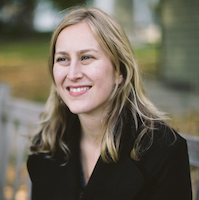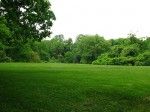As detailed in an Associated Press article released yesterday, federally subsidized scientists applied human and industrial wastes to the lawns of nine low-income families in Baltimore, hoping that such “fertilizer” would prevent the families’ children from lead poisoning. In exchange for letting the scientists till “leftover semisolid wastes filtered from water pollution at 16,500 treatment plants” in to their lawns and plant new grass, the families were given food stamps and the aforementioned new lawns. A similar research study was conducted in a similarly poor neighborhood in East St. Louis, Illinois.
These kinds of poor-neighborhood-laboratories have been used in research since at least the 1990s, and for an even longer time the government has been touting sludge’s benign properties. However, as the article notes, “No one can say exactly what is in sludge. It’s a constantly changing brew of human, commercial, hospital and industrial wastes. The primary organic ingredient is human excrement.” The families who participated in the studies were not told of sludge’s controversial and under-studied contents, but were made to feel that they were at high risk of lead intake—given that concern, no wonder they opted to be guinea pigs. But as Murray McBride, director of the Cornell Waste Management Institute, says, “If you’re not telling [participants] what kinds of chemicals could be in there, how could they even make an informed decision. If you’re telling them it’s absolutely safe, then it’s not ethical.”
AP’s article is impressive, but what it lacks is a sense of these yards, their quality and quantity. Are we talking just a patch of grass before an entrance or a sizable back yard? Pat Tracey, a Johns Hopkins University community relations coordinator who recalled helping with the lawn work said, “They were bald, bad yards. It was considered sterile fertilizer.”
Regardless, the teams’ process is undeniably questionable. The experimental research on poor, under-informed participants has gotten the Baltimore team’s head in trouble before. Here’s what AP found:
“In 2001, Maryland’s highest court chastised him, Kennedy Krieger and Johns Hopkins over a study bankrolled by EPA in which researchers testing low-cost ways to control lead hazards exposed more than 75 poor children to lead-based paint in partially renovated houses.
Families of two children alleged to have suffered elevated blood-lead levels and brain damage sued the institute and later settled for an undisclosed amount.
The Maryland Court of Appeals likened the study to Nazi medical research on concentration camp prisoners, the U.S. government’s 40-year Tuskegee study that denied treatment for syphilis to black men in order to study the illness and Japan’s use of “plague bombs” in World War II to infect and study entire villages.” How did the government come to fund such irresponsible work?
While unappealing to think about, sludge might indeed inhibit lead intake; but if there’s nothing to hide about sludge, why not educate the participants? And why didn’t the team try out their theory in its own backyard?

Diana Lind is the former executive director and editor in chief of Next City.
















